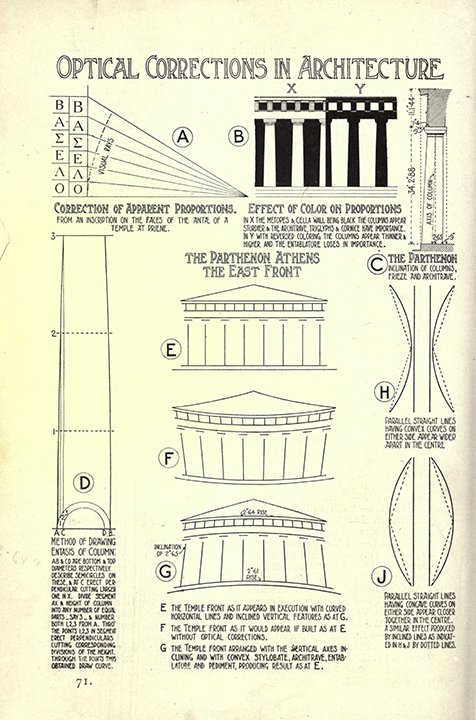[speaker id=27009]
The Ancient Greeks have always been revered as people who knew more about architecture than the rest of the world. They are considered to be the pioneer of taking architecture to the next level by involving various dynamics in it. From their grand scales to their design finesse, there is always something to look back and learn from the Greeks.
But did they know something more than what we still don’t know? What is it that the Ancient Greeks knew about architecture that you still don’t?
Here are ten of them:
Calculated Aesthetics:

The Ancient Greeks always played by the rules. While it may have been a hurdle to creativity, nothing they designed and built was ever random. Every location, every pillar, every height, width and depth were all calculated to find measures that would be most pleasing to the human eye.
The Golden Rectangle:

The ratio for length to width of a rectangle of 1.61803 has been termed as the golden ratio and is considered to be pleasing to the eye, throughout history.
It is no surprise that the Ancient Greeks included this bit of calculations into the design of their buildings, making the result a product of the most pleasing proportions.
Entasis of Columns:
While we are on the topic of how the Ancient Greeks calculated everything, we should understand that Ancient Greeks did like to bend the rules sometimes. Quite literally.
When the Ancient Greeks figured out that perspective and optical illusion makes tall, tapered structures that stand against the sky look like they are concave, they attempted distortion, in reality, to achieve perfection through optical illusion.
This is where the entasis of columns comes into play. A convex curve or a bulge is given to the structure of the column around the middle to correct the hollowness imparted to it through optical illusion.
Correcting EVERY optical illusion:

Yes, the Ancient Greeks didn’t just stop at the columns. Once in the topic of optical illusions, more drawings and calculations were made to check whether a structure, as large as the Parthenon, would look right as a whole.
In an attempt to correct this, the columns were tilted slightly inwards to make them appear straight when looked at from afar, the stylobate and the entablature had an unnoticeable bulge in the middle to flatten them out in the human eye, architraves were slightly tilted to make it appear straight. This means that while the Parthenon appears to be the very epitome of design perfection, it is distorted in reality!
Cyclopean Masonry:

The fort at Mt. Tyrins and Mycenae are truly giants in the world of Greek architecture. Legend says that human beings could never dream to accomplish such a task and that the forts were built by the mythical one-eyed, gigantic children of Gaia, the Cyclopes.
Walls that are, in some places, up to 8 meters thick, this fort is termed as one built using cyclopean masonry. Further study of the structures resulted in the realization that the pieces of stone used to build the fort were all recycled from other buildings. This was the reason that the blocks used were uneven and differently sized and not because they were shaped by the crude hands of the cyclopes.
Building as a Sculpture:
The Ancient Greeks openly treated buildings as sculptures that one can occupy. It was these ideas that made them strive for perfection despite optical illusions and varying perspectives.
Petrification of Structures:
The petrification of structures was the Ancient Greeks’ architectural translation of legends to convert their previously wooden structures into stone. Wooden elements were replaced with stone and birthed the desire to design structures of stone that are built to last.
Reinforcing blocks with Iron:
The beautiful columns of the Ancient Greeks were not monolithic, like their Egyptian inspiration, but consisted of several discs of stone held together by iron clamps or dowels and this applied to blocks of load-bearing walls too.
Seismic Resistance:

For a region that has its fair share of earthquakes, the Ancient Greeks found out early on that structures need to resist seismic loads to last. This was why columns were not monolithic and there were many joints in the structure of a building.
Architects were never simply architects:
In the classical age, Greek architects were also philosophers, sculptors, artists, soldiers, and many who were interested in astronomy, physics, math, and literature. This was the reason that famous Greek architects were hardly ever young. The truly amazing part was that all of their knowledge was used in the design of their buildings.
It is no wonder that the time of the Ancient Greeks is coined the Classical Age of Architecture and it is not a title undeserved. Such was the way of the Greek architects who gave a whole new meaning to the beauty that lies in the eye of the beholder.

